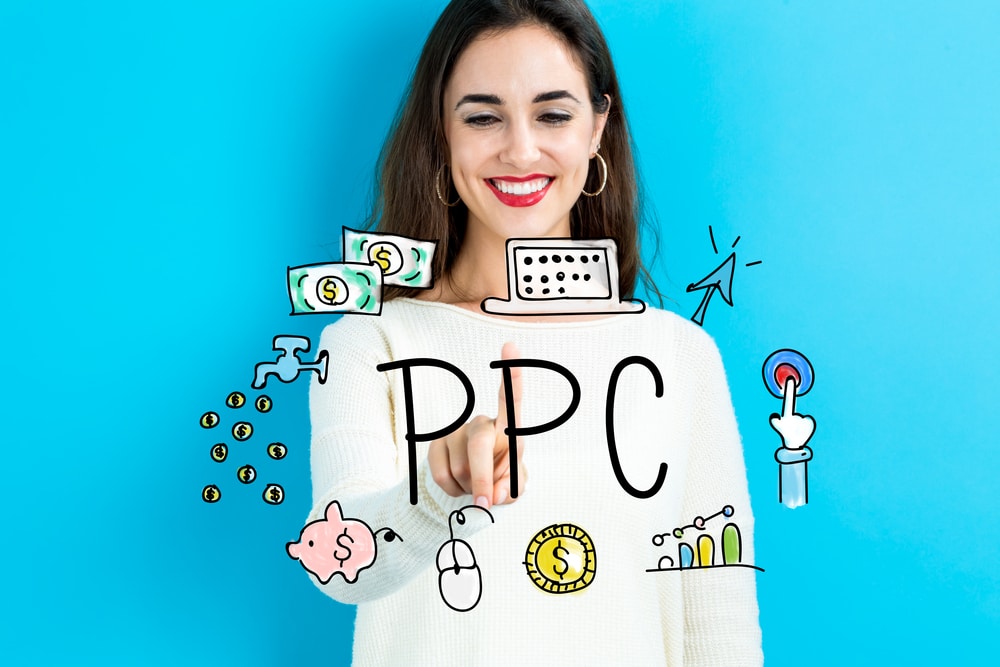One thing you can be sure of in the online space is competition. In fact, there are almost 1.2 billion websites currently competing for eyeballs around the world. To rise to the surface you need to find your niche and within that space you must define yourself as the best at what you offer. It sounds simple enough, but in reality digital marketing is a daily struggle. One clear way to hold relevance is to assert visibility in search engine results pages, or ‘SERPS’. To do this, you’ll need a robust marketing strategy and the kind of regular focus and recurring content cycle that draws traction.
There are a million different fronts on which to enter this struggle. PPC advertising is just one avenue your brand can use to amplify your voice and increase both traffic and clicks. Then Google ads is the go-to resource for effective display marketing, which utilises paid-per-click tools to only charge advertisers when their ad is clicked. Most often these are native ads that pop up in search results and encourage qualified traffic to prod in their direction. If you bid on a search term you will be given a set cost per click – this is what you will be charged whenever a visitor hits your link. And, of course, there are budget caps and duration limits so you don’t break the bank.
Ultimately, this per-click fee model will ensure your PPC ad is easy to regulate and businesses aren’t ever tricked into accepting runaway budgets (there is also the option to opt in and pay for impressions).
Benefits Of PPC For Advertising
As a short-term tactic, paid search advertising can offer quick wins and added exposure for struggling links, or low ranking pages. If your ads are approved and drawing relevant traffic it’s very likely you’ll start to see results quite quickly, depending on your spend limit. It’s worth noting that the top three results – these are always ads – in SERPS get over 45% of clicks from users.
One of the larger concerns businesses have (and rightly so) is the ad spend you’ll accrue from start to finish. As mentioned, this can be very easily controlled and it isn’t difficult at all to stay within the confines of an allocated budget. If you need to rescale your campaign that’s simple enough as well. It just depends on how much money you are willing to allocate to each campaign. In this regard it is essential to plan ahead and determine exactly what it is you want to accomplish from the outset.
Build More Brand Awareness
When you’re starting out at the reins of a new campaign it can be tempting to scale your campaign up to meet unrealistic targets. Traffic and lead generation are instantly accessible as you appear in high-volume searches, but you need this footfall to convert as your target goal dictates. Maybe you’ve just angled your campaign to achieve brand awareness in which case a pay-per-impression model usually works best. However, if you’re looking for more than visibility, if you want to convert visitors and bring in revenue, there’s definitely details you’ll need to refine in your strategy.
Pick Your Customers And Take Them Where They Want To Go
There’s nothing worse than falling prey to clickbait. Wait, the ‘you wouldn’t believe what they look like now’ headline just takes me to an album of believably aged celebrities? One clear way to draw quality traffic and repeat visitors is to create dedicated landing pages for your campaign. Don’t take customers where they don’t want to go. Refine your copy so it speaks directly to your target audience and take them into the flow of a smooth user experience, where their path never deviates too far from what was originally offered.
A winning strategy is defined by the identification of an exact target audience. Who do you want to click your ad? How specific do you want to be in your targeting options? On average, PPC ad traffic gains 50% more conversions than SEO in organic channels. You just need to know who you’re selling to. One way to do that is to explore geo-target options and tailor what you’re saying to the market it reaches. This extends to your copy as well: US customers want to hear about ‘vacations’ – not ‘holidays’.
Choose Your Keywords Wisely
We’ve talked a little about the need to set a realistic budget, as well as the importance of drilling into demographics and identifying your audience. Last up, we want to address the search for keywords and the significant role this will play in your paid search campaign.
Always remember that you need to hit the sweet spot of not making your ad so broad that it gets lost in the everyday footfall, yet not so niche that no one ever finds it. Assess the most high-volume phrases for your services. Then match those phrases with the intent of your potential customers – exactly what opportunities are lurking there to capitalise on the everyday flow of attentive browsers?
Any questions about anything we’ve shared in this article? Be sure to drop us a message!


